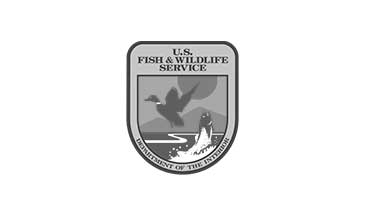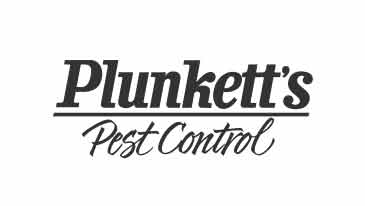GooseGuard Program
Keep your property free of any nuisance geese. Schedule a service for our specialized program for humane goose management, GooseGuard!
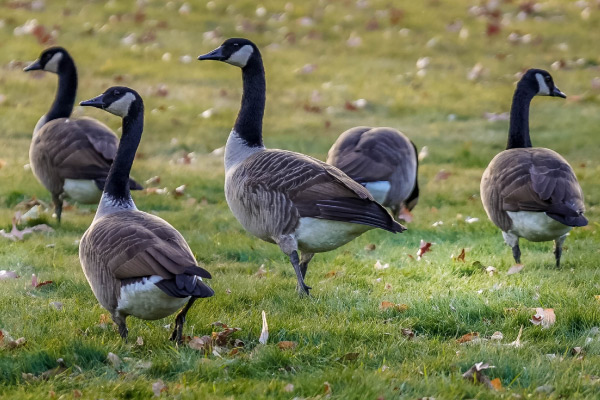

Are Canada geese wreaking havoc on your property? Look no further than Varment Guard Wildlife Services and our specialized program, GooseGuard.
We understand that Canada geese are federally protected under the Migratory Bird Treaty Act, making their removal a task that requires expertise and permits from the U.S. Fish and Wildlife Agency. That’s why a professional goose management program is key!
Understanding Geese Behavior and Activity
Canada geese are birds in the Anatidae family, primarily residing in the Northern Hemisphere. While their biology and traits vary, the most common type in North America is the Canada goose. Traditionally, they inhabited marshes and rural lakes but have now adapted to man-made lakes and ponds in residential areas.
Goose Nesting Habits: Nesting sites are typically near water with protective vegetation in close proximity. Planter boxes on high-rise office building balconies quickly become nesting sites of choice. Geese are aggressive; injuries to people or pets can often happen when a goose is attempting to defend its nest.
Goose Breeding Habits: Canada geese mate for life but will re-mate upon the death of their mate. Mating season is during spring and is approximately 25 days long. During this time, female geese usually lay one egg every other day. The geese abandon their nest a few days after hatching.
Geese issues typically arise between March and June, during their nesting period. Breeding pairs start nesting in late February and March, with eggs being laid soon after. Incubation lasts around 28 days, and goslings remain flightless for about 70 days. Adult geese molt their flight feathers near the end of June, making it the ideal time for safe and effective removal.
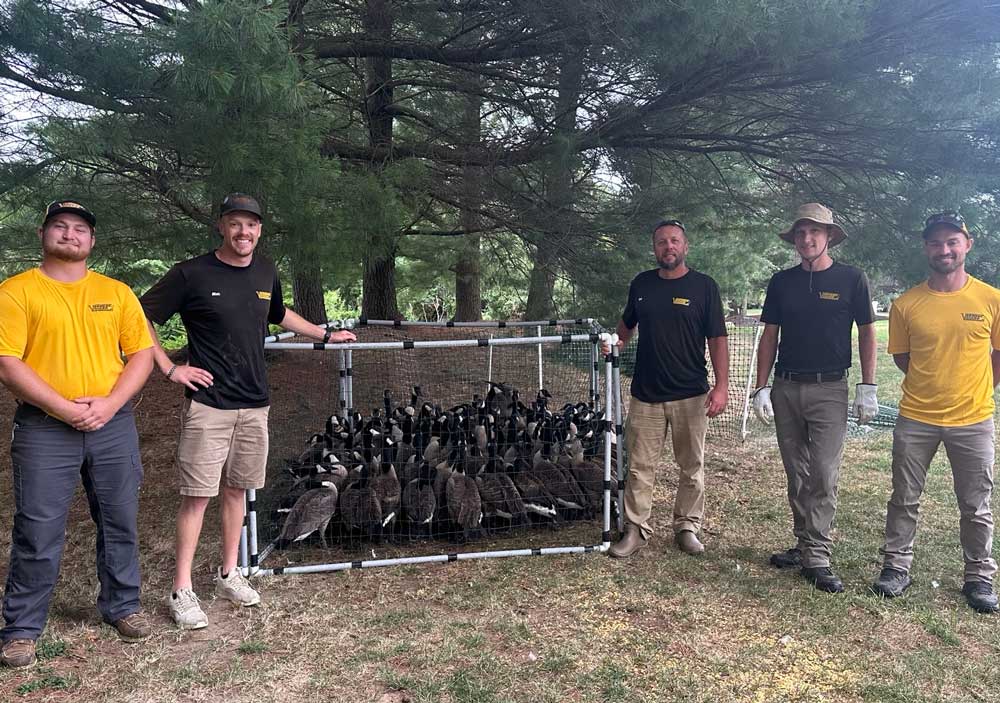
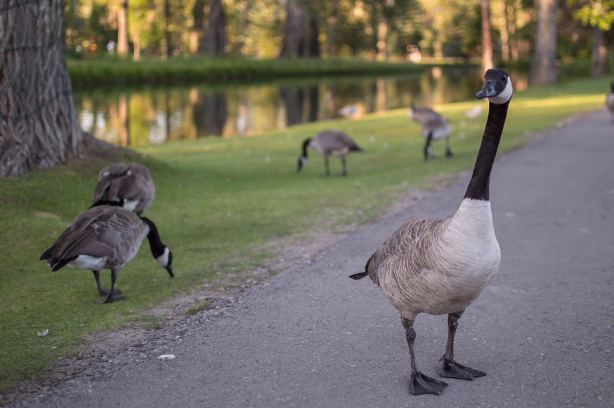
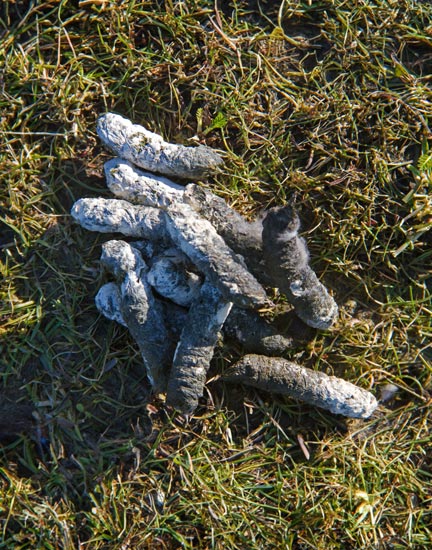
Damage and Issues Caused
Geese can cause significant damage and disruption to your property. Some of the issues they create include:
Trampling or Consumption: Geese have a significant impact on grain crops and ornamental plantings. They can trample delicate plants, causing physical damage and reducing crop yields. Additionally, geese are voracious eaters and can consume large quantities of plant material, leading to further losses.
Aesthetic Damages: A large flock of geese can quickly litter the ground with droppings. This not only creates an unsightly mess but can also lead to unpleasant odors and potential health risks.
Ruined Landscaping: Geese are particularly fond of turf grass and lawns, which they can quickly ruin through overgrazing. Their presence can also lead to bodies of water becoming overgrown with vegetation due to the excess nutrients from their droppings.
Disruptive and Hazardous: Geese can pose a significant risk to airport landings and roadways. Their tendency to flock in large numbers can lead to dangerous situations if they cross paths with aircraft or vehicles. The risk is particularly high during their migration periods.
Luckily, Varment Guard has the knowledge, training, and tools to remove any nuisance geese humanely and keep them away for good.
Why Choose Varment Guard?
Don’t wait for the geese to become a problem — take proactive measures to keep them at bay! At Varment Guard, we specialize in getting and keeping geese away from your property in a sage and humane manner. Our professional goose control services include:
Goose Exclusion: To exclude geese from your property, we create a tight grid-work or back-and-forth parallel pattern that utilizes stainless steel wire or monofilament strands. These strands or wires can be suspended over bodies of water to keep geese from landing. Alternatively, complete enclosure of problem areas and structures that need to be protected can be achieved using wire mesh or fencing that can be installed around a pond using single-strand wires.
Live-Trapping & Relocation: During molting season Canada geese can be herded into a holding pen with wire fencing or netting. Geese that have been rounded-up can be relocated humanely to a prearranged release site. However, it is important to also note that relocation is also not legal or recommended in every state we serve. *TA Federal Permit is required to live-trap and relocate/remove Canada geese (per 50 CFR 21.41a*
Liquid Turf Repellent: Varment Guard uses a non-toxic applicant derived from natural compounds that renders lawns and vegetation inedible, habituating the geese to recognize the area as undesirable.
Harassment & Intimidation: Use of sound emission devices, lasers, remote-controlled devices, and our trained goose dogs have been proven as effective short-term deterrents on Canada geese.
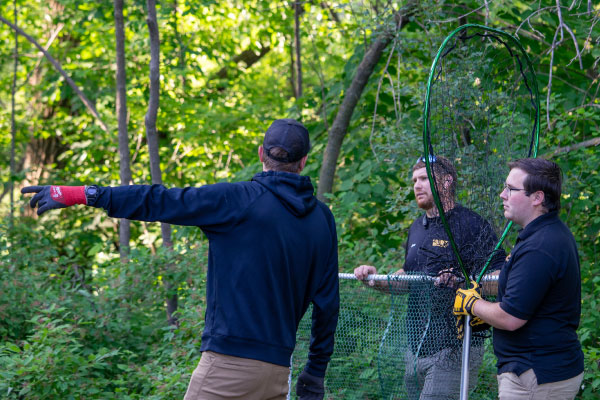
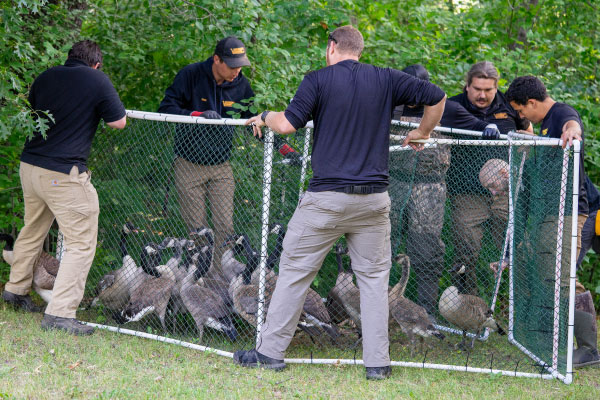
Our bird experts have been providing bird control solutions for over two decades. Our specialist bird control teams are OSHA compliant and OSHA certified. We’ve provided permanent bird management solutions to many industries across more than fifteen states and even Puerto Rico. We have the tools and experience to solve any kind of bird problem for any kind of residence or commercial facility. Our experts are rigorously trained, experienced, and well-equipped to handle any kind of bird-related nuisance you might be having.
Varment Guard will help develop customized bird control plans for you. We take into account the unique needs and concerns of your home or business and tailor our services to align with your safety protocols. We will apply the latest and most effective bird control technology that’s appropriate for your specific problem.
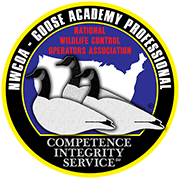
Schedule a GooseGuard Service Today!
Don't let bird infestations disrupt your business and pose risks to your property or health. Schedule a professional bird control service today with one of the top bird control companies, Varment Guard.
Our team of highly-trained professionals provides swift, effective, and humane solutions for your bird-related issues. Whether it's bird deterrence, removal, or guidance on preventing future issues, we've got you covered.

Request A Service
Frequently Asked Questions
Do geese mate for life?
Yes, geese generally mate for life. They are known for their strong pair bonds and typically stay with the same partner until one of them dies. If one member of a pair dies, the other member usually finds another mate within the same breeding season.
Are Canada geese protected?
Yes, Canada Geese are protected by the Migratory Bird Treaty Act in the United States. This makes it illegal to harm or kill these birds, or to damage or move their eggs and nests, without a federal permit.
What is the weight of a Canada goose?
The weight of a Canada goose can vary widely based on its sex, age, and subspecies. On average, an adult Canada goose can weigh anywhere from 6.6 to 19.8 lbs (3 to 9 kg).
When is the geese mating season?
Geese typically begin their mating season in the late winter to early spring, usually around February to April. This can vary slightly depending on the region and specific species of geese.
What do geese eat?
Geese are primarily herbivores and feed on a variety of grasses, grains, and berries. They also eat small insects and fish. They are known to graze on agricultural crops, which can lead to conflict with farmers.
How long do geese live?
The lifespan of geese can vary depending on the species and individual health factors, but on average, wild geese live for about 10-24 years. In captivity, they can live up to 30 years or more with proper care.
What is a group of geese called?
A group of geese on land or water is commonly referred to as a ‘gaggle’. When geese are in flight in a “V” formation, they are known as a ‘skein’, a ‘team’, or a ‘wedge’.
Do geese have teeth?
Geese do not have teeth in the traditional sense, like mammals do. However, they do have serrated edges on their beaks, which are often referred to as “teeth.” These serrations or “teeth” are called tomia, and they help the goose to cut through grasses and other vegetation more effectively. They are not used for chewing like mammalian teeth, as geese typically swallow their food whole or in large chunks. These tomia are not made of enamel and dentin like mammalian teeth, but are extensions of the beak itself.

